Ever wonder how to make risotto at home? This creamy comfort dish is simple to make in one pan on the stove, but you’ve got to make sure you’re following the step right to make the best risotto possible! Here’s our step-by-step breakdown of how to make great risotto (in under 30 minutes).
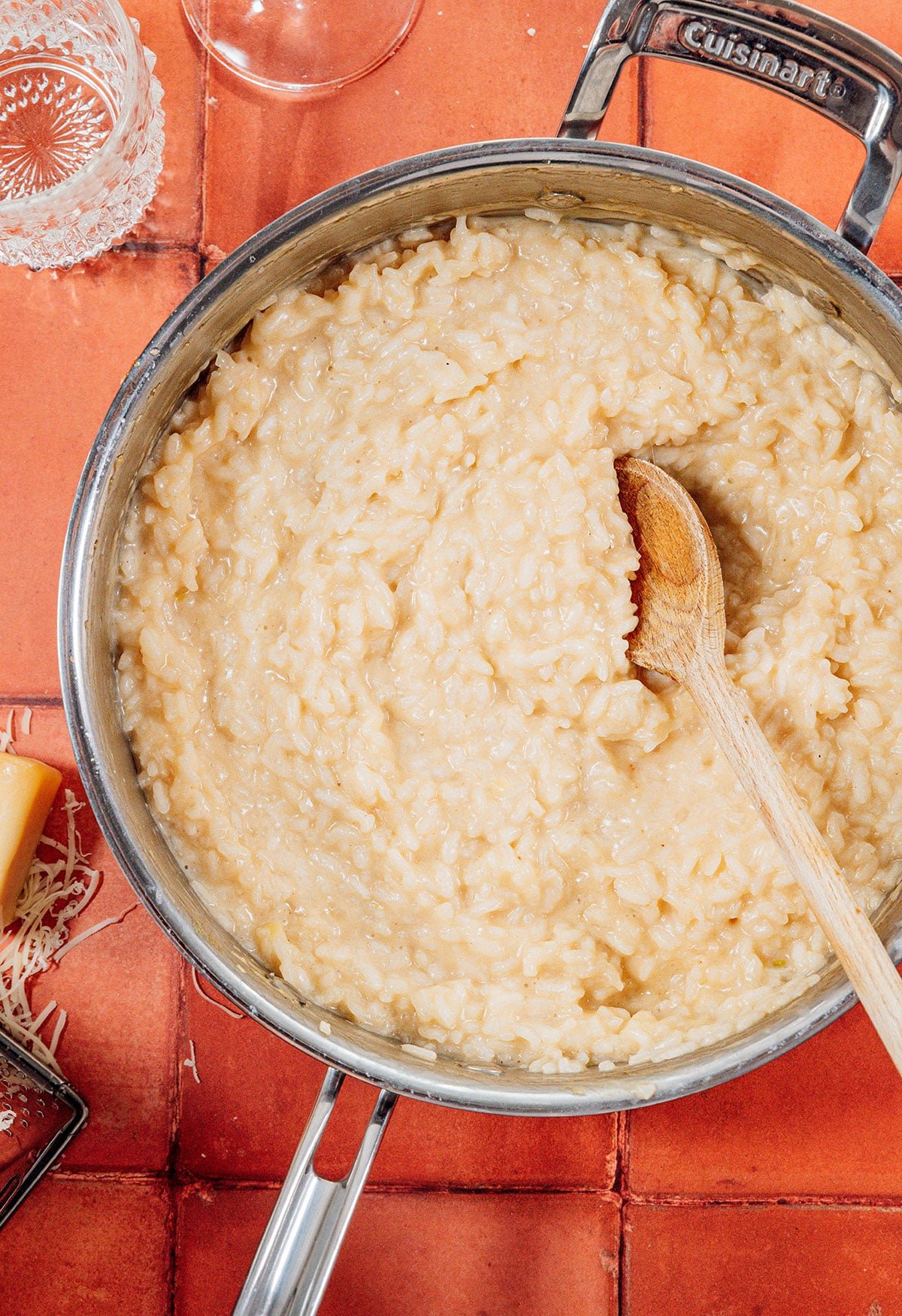
I’m what you might call…obsessed with risotto. And over the years I’ve created a lot of risotto recipes, like truffle risotto and butternut risotto and mushroom risotto!
So today I’m showing you how to make a basic risotto recipe. The flavors are simple but decadent, and perfect for adding your favorite vegetable or protein to!
Why you’ll love This Risotto
- It’s ready in one pan on the stove
- It takes less than 30 minutes
- You’ll only need 8 ingredients
- It’s so creamy and dreamy
- You can customize it in so many ways!
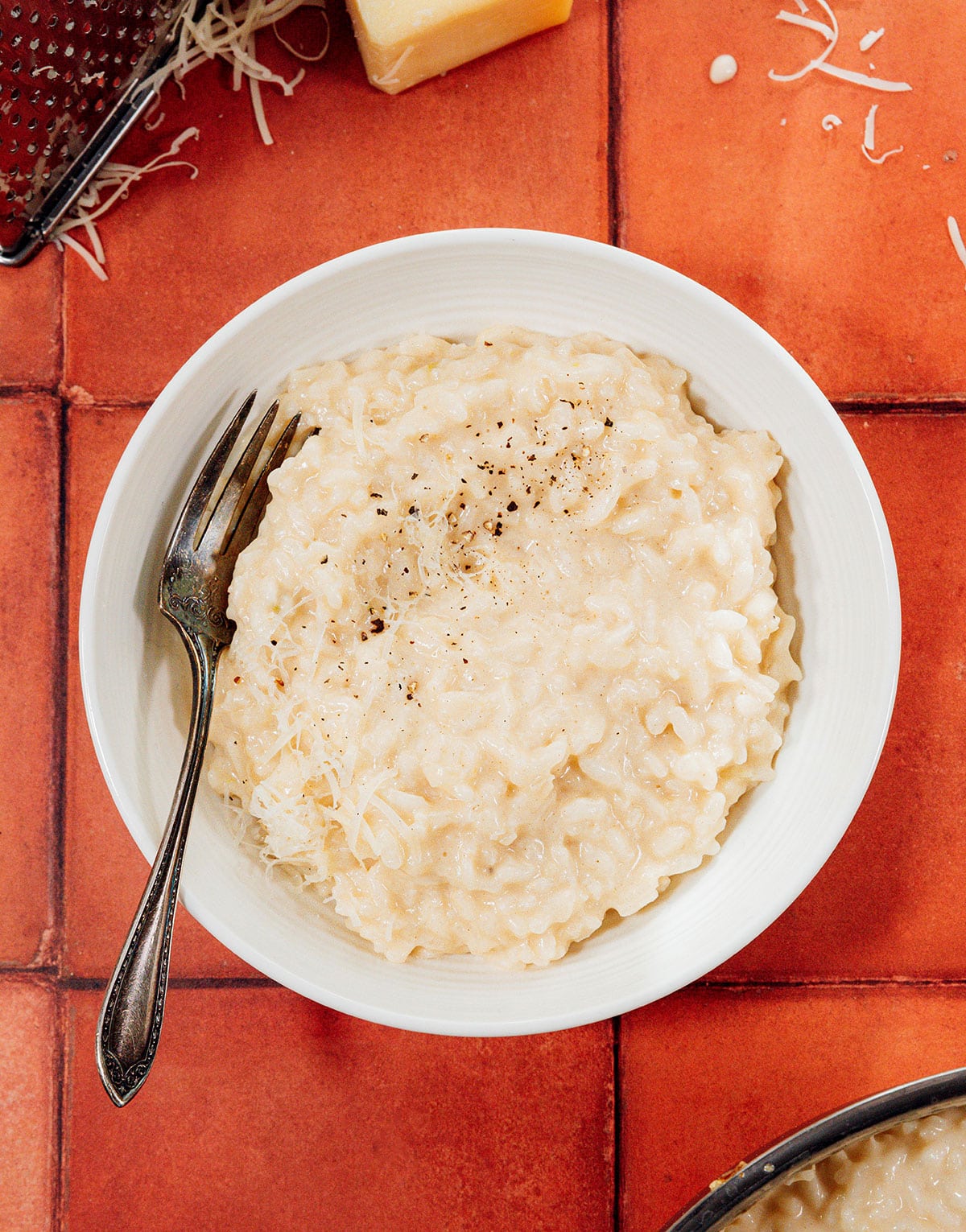
Risotto Ingredients
You’ll need just a handful of easy-to-find ingredients to make risotto:
- Butter: Butter is the heart of creamy risotto, providing richness and depth to the dish.
- Shallots, Garlic and Salt: Our aromatic flavor base!
- Arborio Rice: The choice of rice is crucial for a creamy and velvety risotto. Arborio rice, with its high starch content, absorbs the liquid while creating a creamy texture thanks to its starches.
- Dry White Wine: Wine adds a layer of acidity to the risotto. It’s optional, but highly encouraged!
- Vegetable Broth: The warmed broth is the liquid that cooks the rice. Using warm broth ensures a steady and even absorption (here’s how to make your own vegetable broth form scraps!)
- Parmesan Cheese: Grated parmesan brings a salty richness to the risotto. Opt for grating it yourself rather than buying pre-grated cheese – the flavor and meltability are better!
What Is Arborio Rice?
Arborio rice is a type of short-grain rice known for its high starch content and creamy texture when cooked. It originated in Italy and is named after the town of Arborio!
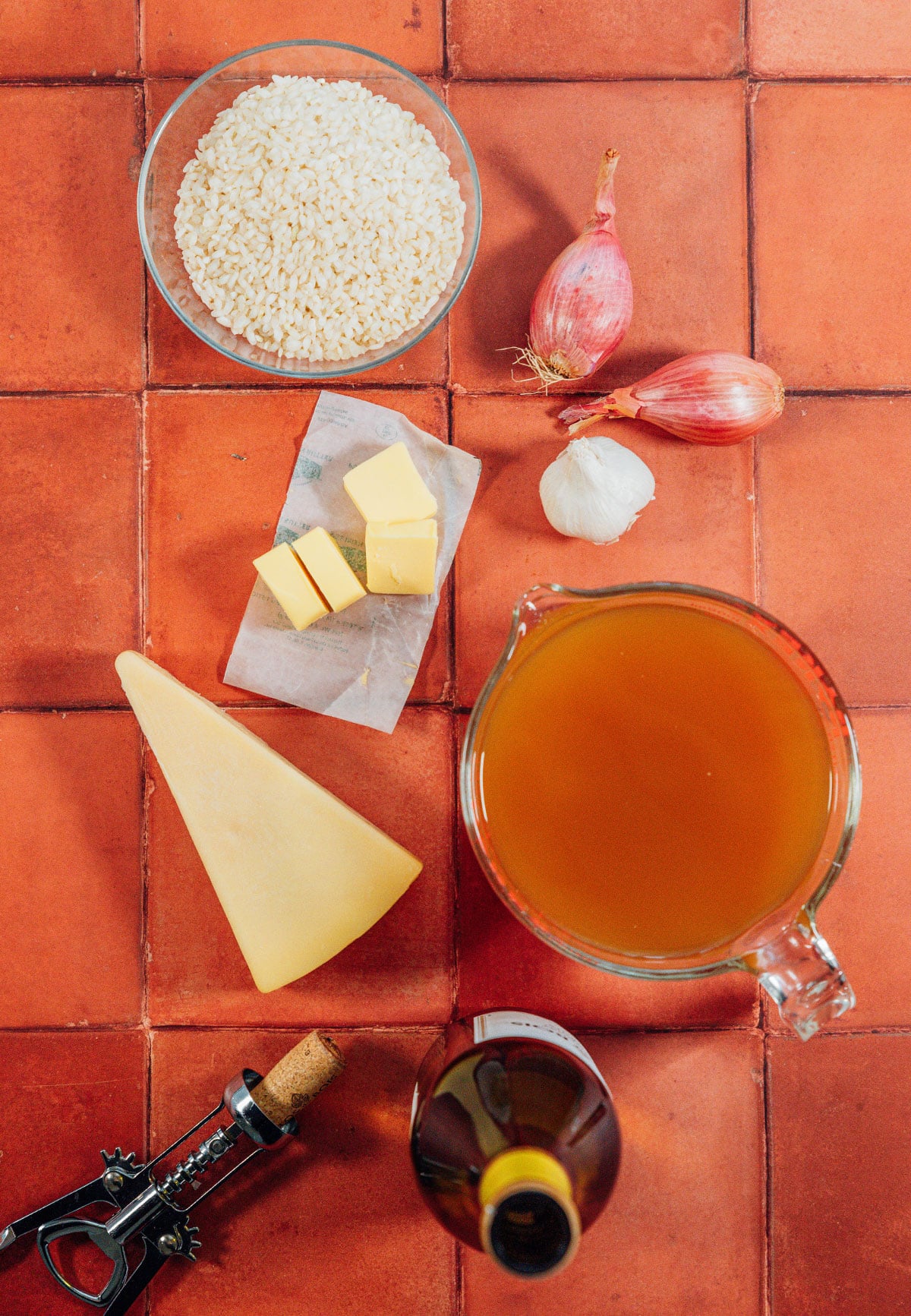
Which wine is best for risotto?
When it comes to making risotto, look for a low to moderately priced dry white wine, like pino grigiot or sauvignon blanc. They bring a bright acidity and subtle fruitiness that can complement a wide range of flavors. They work well with seafood or vegetable-based risottos.
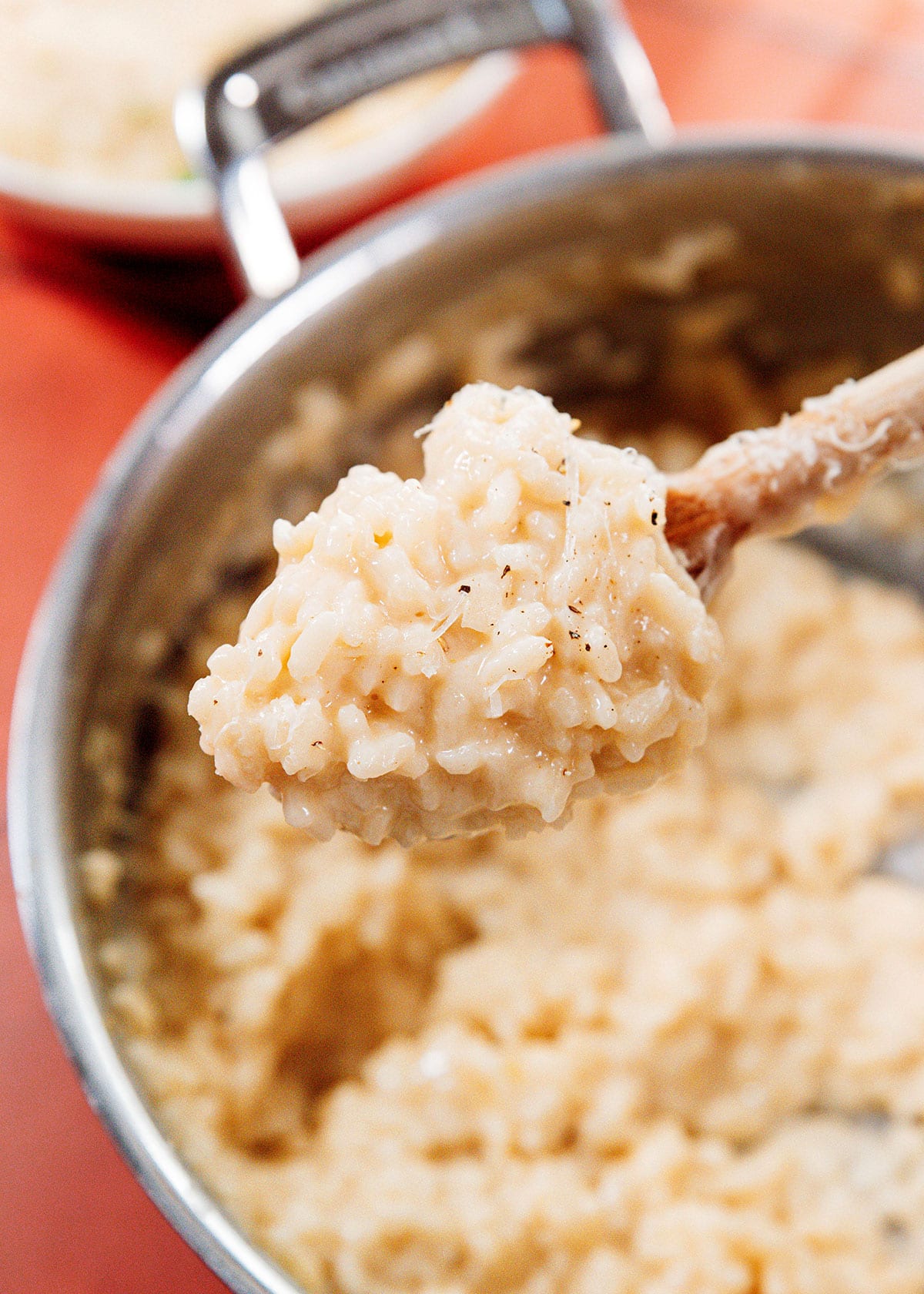
How to make Risotto
Get your spoon ready because making risotto is all about patience and stirring!
- Make flavor base with shallots and garlic
- Toast rice to improve the texture and flavor
- Add wine to deglaze the pan and add acidity
- Cook rice slowly by adding one ladle of warm broth at a time
- Serve after stirring in grated parmesan and a pat of butter
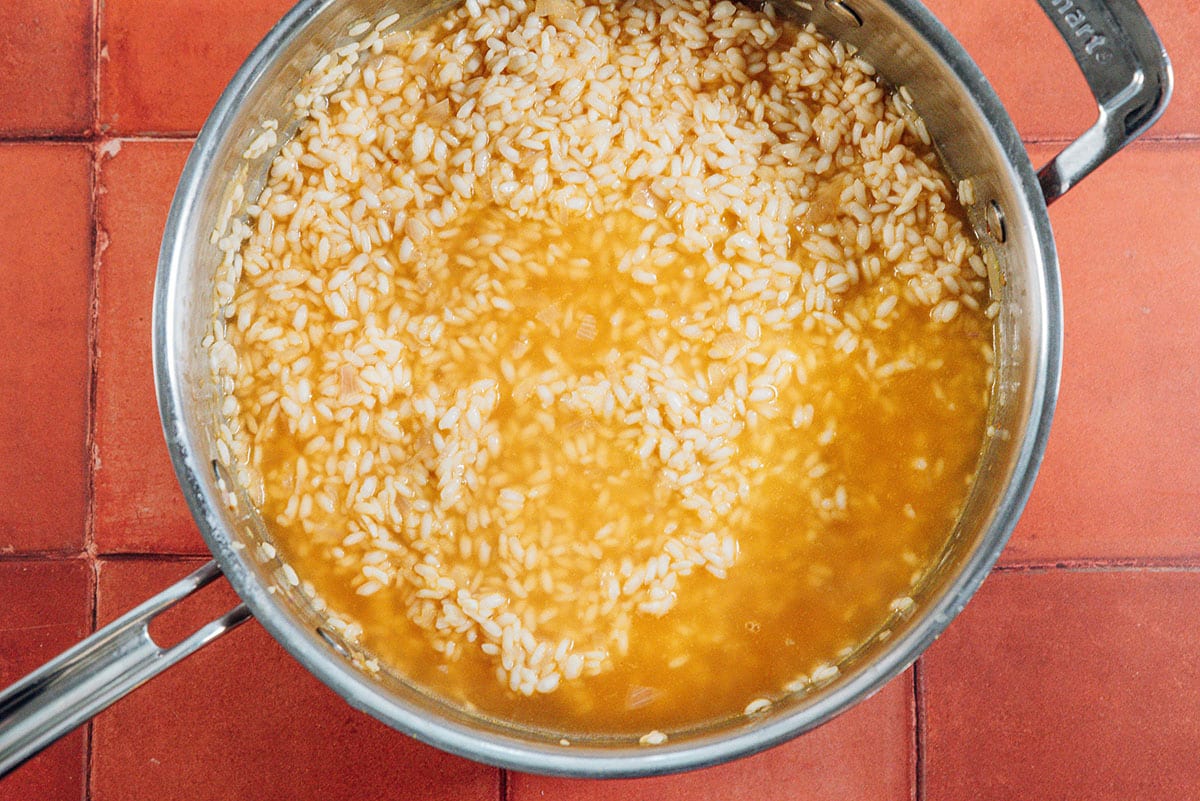
How To Know When Risotto Is Done
Knowing when risotto is perfectly cooked requires a keen eye and a bit of practice. Here are some signs to look for:
- Creaminess: The risotto should be creamy and slightly soupy, with each grain of rice distinct yet bound together by the creamy sauce. It shouldn’t be dry or runny.
- Al Dente Texture: The rice should be cooked to an “al dente” texture, meaning it should be tender but still have a slight firmness to the bite. It should not be mushy.
- No Hard Core: There should be no hard, chalky core in the center of the rice grains.
- Total Cooking Time: Depending on the type of rice and heat level, risotto typically takes about 18-20 minutes to cook after the first addition of liquid.
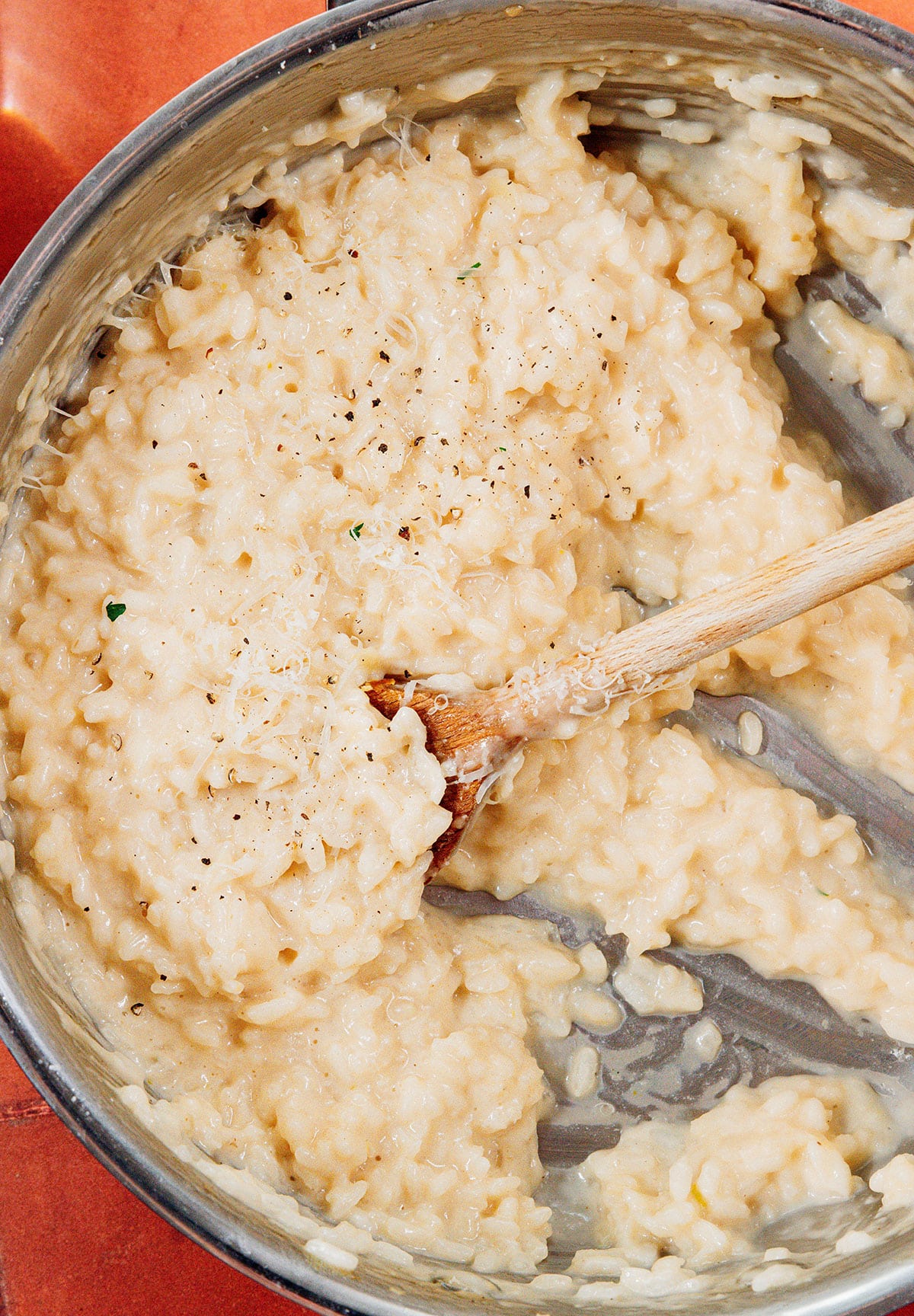
Storage
Risotto is best served as soon as its cooked, but leftovers happen! If you have leftover risotto, here’s what to do:
- Airtight Container: Once the risotto has cooled, transfer it to an airtight container. This helps prevent moisture loss, which can dry out the risotto.
- Refrigerate: Place the sealed container in the refrigerator. Risotto can be stored for up to 2 days.
- Avoid Freezing: While you can freeze risotto, it tends to change texture and become somewhat mushy when thawed. If you do freeze it, be prepared for a slightly different consistency.
- Reheat Gently: To reheat, add a splash of broth or water to the risotto and gently heat it on the stovetop over low to medium heat. Stir continuously to ensure even heating. Avoid high heat as it can lead to uneven reheating.
- Check Texture: Risotto tends to thicken in the refrigerator. If it’s too thick after reheating, you can add a bit more liquid (broth or water) to achieve your desired consistency.
How To Make Risotto Creamy
Due to the nature of arborio rice, risotto should naturally have a creamy consistency when cooked correctly. You can further help it along by:
- Gradually adding broth to coax the starches out of the rice
- Stirring frequently to help move those starches around
- Toast the rice before adding broth
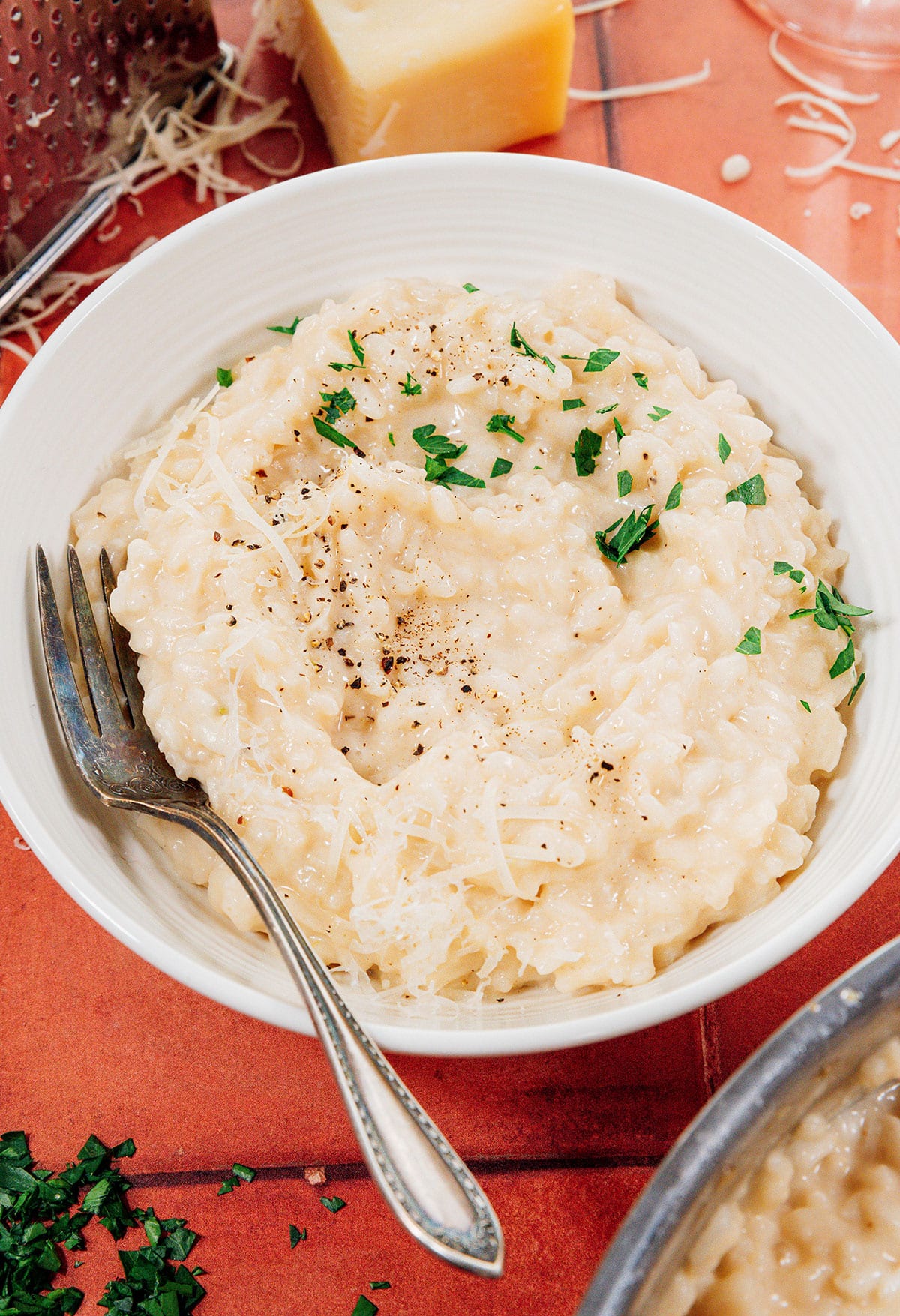
Arborio Rice Ratios
Cooking arborio rice to perfection is an art, and the right liquid-to-rice ratio is crucial. Here’s a basic guideline: For every cup of arborio rice, you’ll need about 3 to 4 cups of liquid.
Common Questions
Is risotto gluten-free?
Yes, risotto can be gluten-free. The primary ingredient in risotto is arborio rice, which is naturally gluten-free. However, it’s essential to be cautious with any additional ingredients or flavorings you incorporate into your risotto. For instance, if you’re using store-bought broth or stock, be sure to check the label for any gluten-containing additives.
Is risotto low carb?
Risotto, traditionally made with arborio rice, is not considered a low-carb dish. Arborio rice is a type of short-grain rice that is relatively high in carbohydrates.
For those following a low-carb diet, there are alternative options available, such as cauliflower rice risotto!
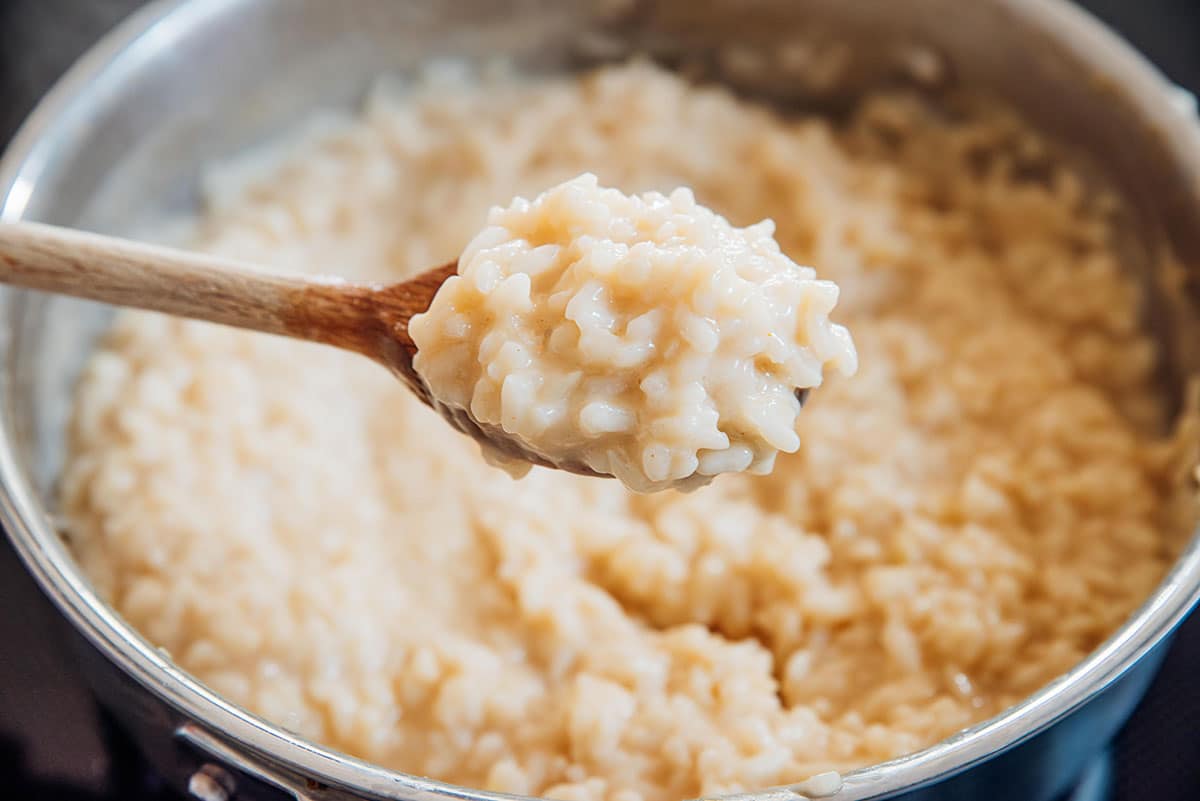
P.S. Love risotto? Here are 10 risotto recipes to try next!
Reader rating
“OMG my taste buds are singing and dancing. The zesty flavors in the Risotto are AMAZING!” —Kari
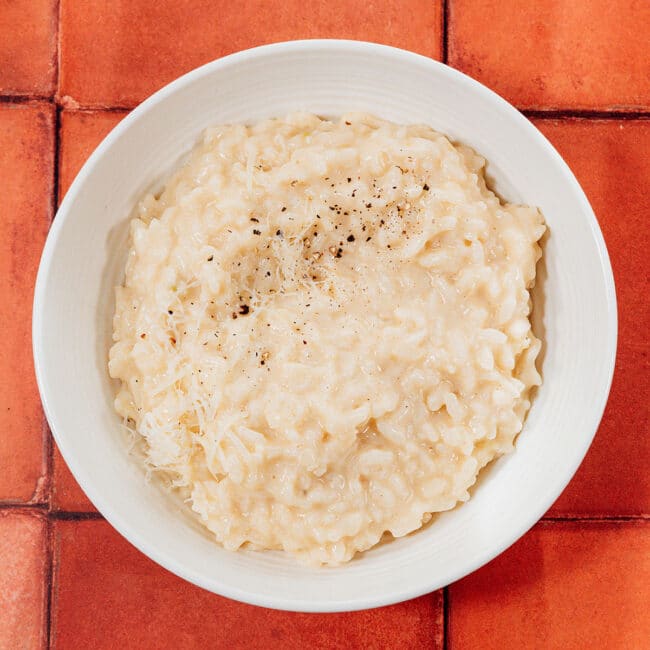
Ingredients
- 1 Tbsp unsalted butter 14 g
- 2 medium shallots finely diced, should give you about ½ cup
- 2 cloves garlic minced
- 1 tsp salt
- 1 ½ cups arborio rice 270 g
- 1 cup dry white wine optional*, 236 mL
- 4 to 6 cups vegetable broth warmed, 1 to 1 ½ L
- 1 cup grated parmesan cheese 75 g
- 2 Tbsp heavy cream 30 mL
Instructions
- Flavor Base: Heat 1 Tbsp unsalted butter in a large pan over medium heat. Add 2 medium shallots (finely diced) and 2 cloves garlic (minced), cooking until shallots are translucent and soft, about 3 minutes.
- Toast Rice: Add 1 tsp salt and 1 ½ cups arborio rice and cook, stirring frequently, for about 2 minutes, or until the rice is slightly opaque on the outside but uncooked on the inside.
- Add Wine (Optional): Add 1 cup dry white wine to the pot and simmer until wine has completely been absorbed.
- Cook Rice: Slowly add the vegetable broth, adding ½ cup at a time. Wait until broth has completely absorbed before adding another ½ cup, continuing this process until rice is cooked through. Begin tasting the rice after 15 minutes. Once it has reached your desired texture, stop adding broth (you may not need the full amount).
- Serve: Stir in 1 cup grated parmesan cheese and 2 Tbsp heavy cream. Serve warm, topped with freshly cracked pepper.

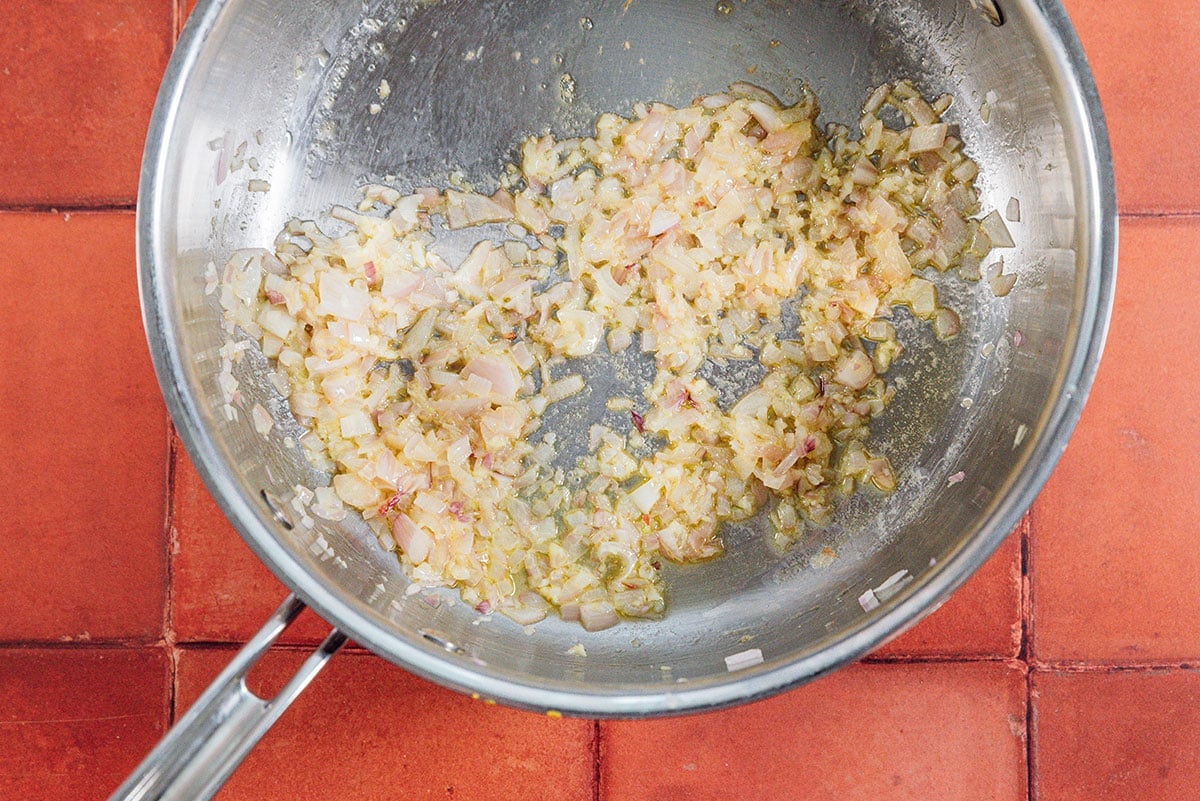

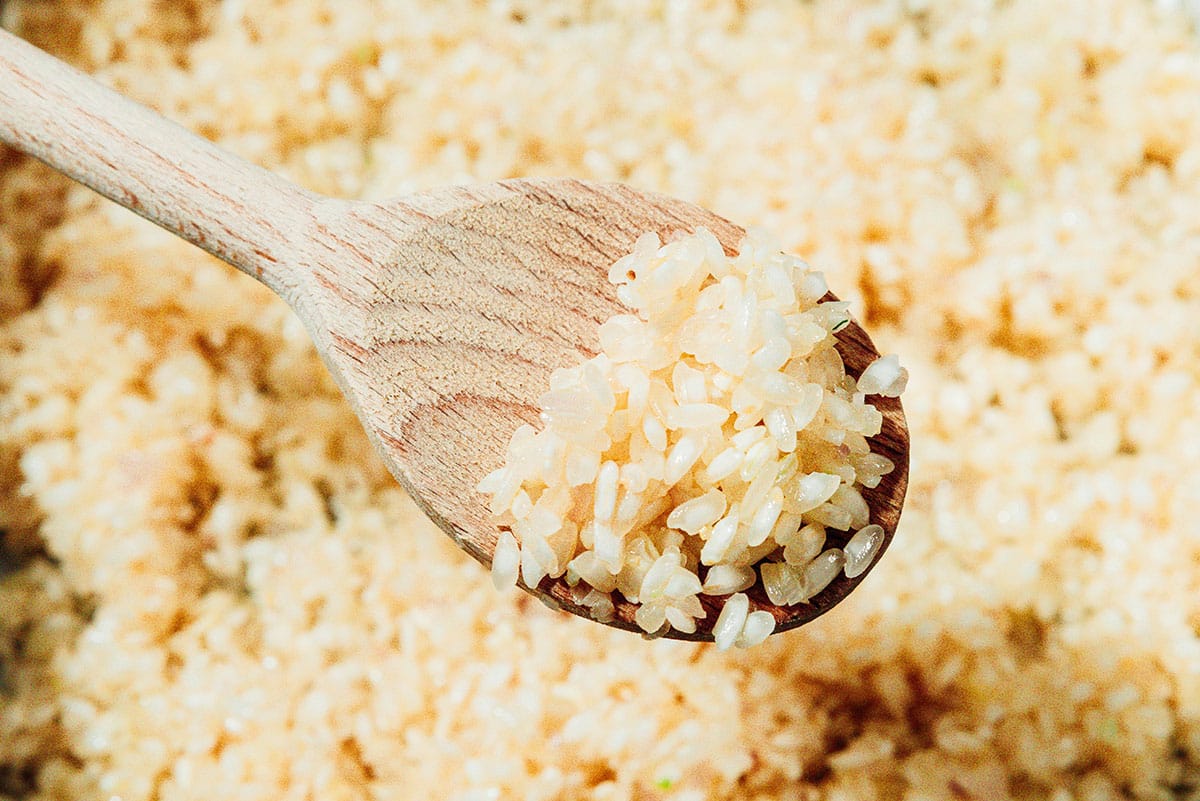
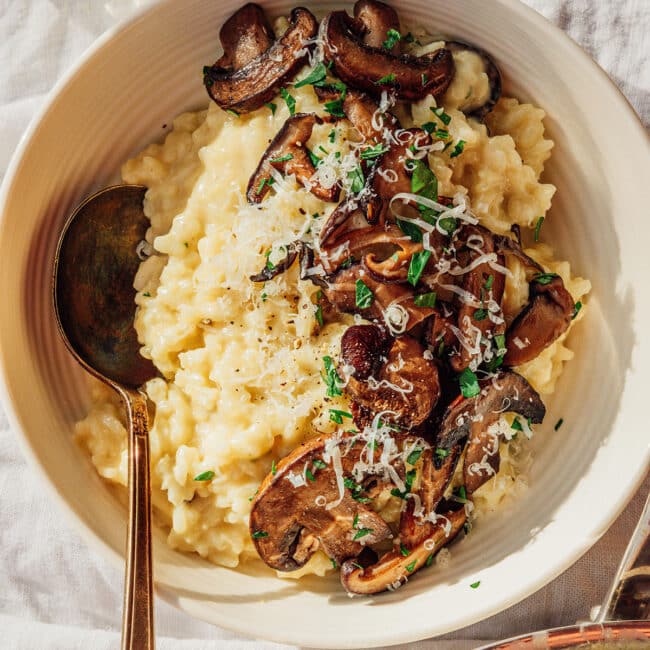

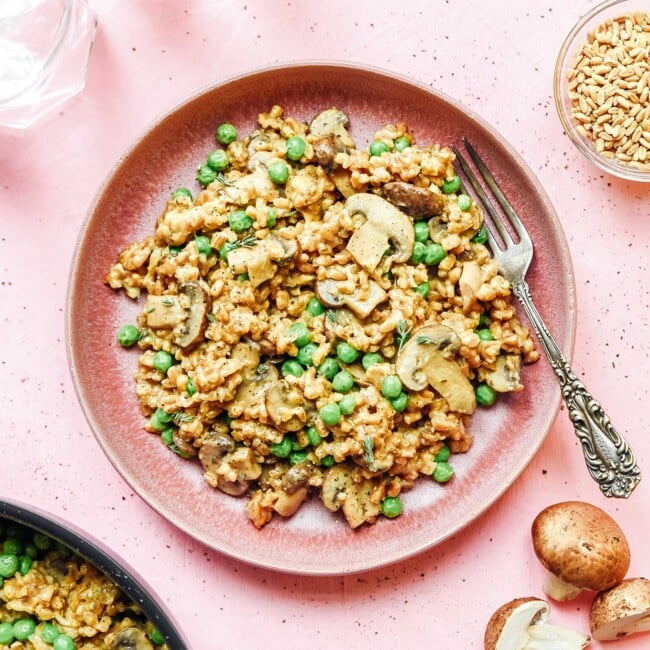

kari Ward says
OMG my taste buds are singing and dancing. The zesty flavors in the Risotto are AMAZING! Snow day today and it was a nice afternoon project slow cooking the rice with broth while sipping on the rest of the vino blanco! Thanks Sarah and crew! Delicious!
Sarah Bond says
YAY! I’m so happy to hear it, Kari!! Enjoy 😀